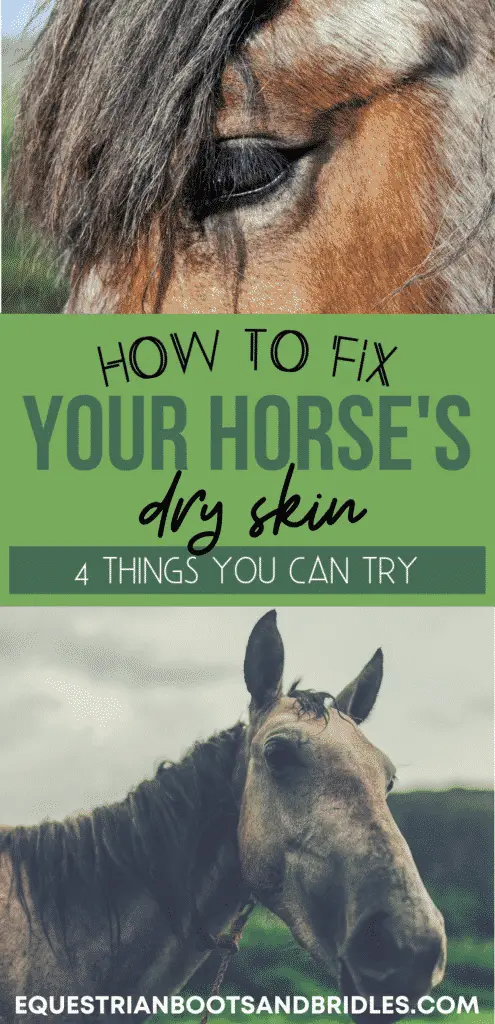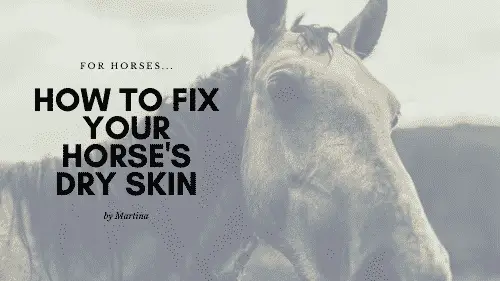Have you noticed your horse has dandruff, bald spots, or dry skin? Finding out how to fix your horse’s dry skin can be confusing. But we’re here to help!
The first thing to do, of course, is to identify why your horse has dry skin. To help you out there, we have written a post on why your horse could have bald spots, which identifies a number of skin-drying culprits. You can read it here.
Essentially, it could be one of a few medical problems – many of which we can address using the solutions below. But equally factors like change in weather and even just your horse’s genetics can play a huge role.
Ultimately I would highly recommend seeing your vet to get some answers. You could try some of our solutions first, but if they don’t work, then intervention from a professional is definitely warranted.
How to Fix Your Horse’s Dry Skin: Possible Medical Concerns

There are a few medical conditions that could be causing your horse’s dry skin. Let’s cover them quickly before we look at possible solutions for how to fix your horse’s dry skin:
- Dermatitis. This is also known as eczema, and it occurs in humans as well. Dermatitis basically just an inflammation of the skin cells, which could be caused by another factor such as an allergy.
- Dandruff. This is another condition that also presents in humans, where the skin sheds in dry flakes instead of smaller particles. This can be caused by other issues, commonly dietary issues.
- Anhidrosis. This condition, also known as hypohidrosis, causes the inability to sweat. The reason I’ve included it here is because it often presents with dry and flaky skin around your horse’s face – although that inability to sweat is the more obvious sign. This can cause overheating and heat stroke, so it’s best to see a vet urgently if you suspect it in your horse.
- Allergies. As I mentioned above, sometimes allergies can be the underlying factor behind skin conditions. For example my co-editor Katie’s dog is allergic to chicken – whenever she manages to sneak some she gets a really dry rash on her belly. It can be the same for horses! Although probably not with chicken…
Alright, we’ve covered what could be causing some dryness, now let’s get on to how to fix your horse’s dry skin!
How to Fix Your Horse’s Dry Skin: Our Solutions
Change in Diet
The first thing that I would always recommend for how to fix your horse’s dry skin is a change from the inside out.
Your horse’s diet plays such a huge role in their skin condition, and to be honest in their health in general. Just as it does for humans too!
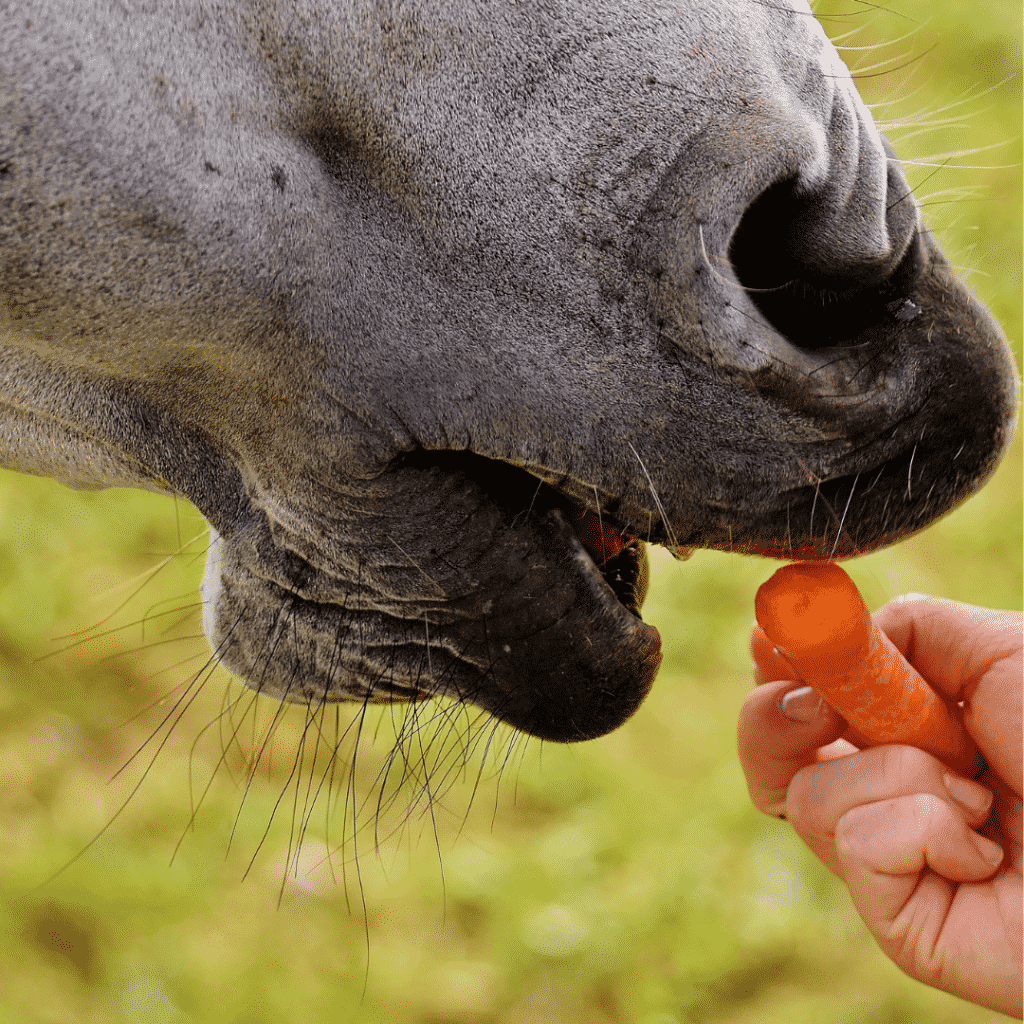
One of the nutrients critical to good skin health is Omega-3 fatty acids. These also help to maintain your horse’s hooves, joints and brain function. Signs of a deficit in Omega-3s can include a dry coat, dry skin and hair loss (both in horses and other animals – including humans!)
The best source for these is a simple fish or krill oil supplement, which you can give to your horse.
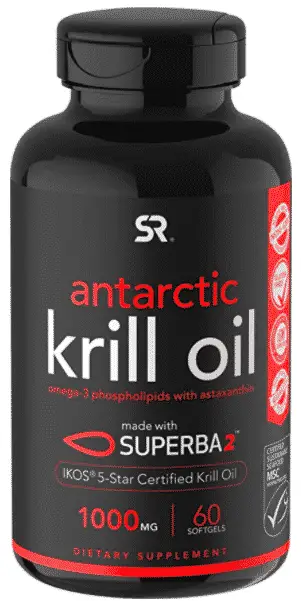
I love Antarctic Krill Oil, which is reasonably priced and has given me really good results. I take it myself, and feed it to both my dogs and my horses.
Coconut Oil
For a topical moisturiser to use on your horse, I recommend that you try coconut oil. It’s all natural, and so incredibly effective. As for brands, I like the Premium Nature Fractionated Coconut Massage Oil.
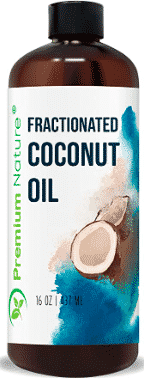
I’m actually onto my 2nd bottle of this stuff. And that’s a big deal, because one bottle lasts more than 6 months for 3 horses.
I use it to moisturize the skin at the base of my horses’ tails. Not only does it absorb quickly, but the moisturizing effects last for several days and it doesn’t burn or irritate their already sensitive skin.
Also, seems to make their tail hairs grow faster too? What a win!
It has no odour, so flies aren’t attracted to it. And what’s more, my usually extremely fussy horses actually seem to enjoy having it applied. Essentially it’s a miracle worker for how to fix your horse’s dry skin!
I have used dozens of products on their dry, flake-y tail heads and this is definitely the best product I have ever found for this purpose.
Switching Shampoos
As you might expect, your choice of shampoo can have a huge impact on the state of your horse’s skin.
In general, I recommend Mane N’ Tail shampoo and conditioner. I think it’s a great all-rounder for horses that have normal skin and hair.
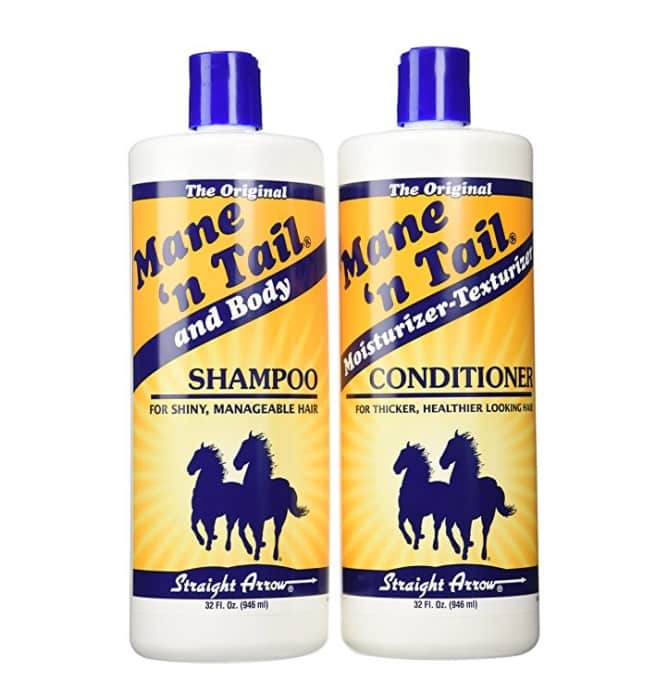
If you’re on a shampoo that feels like it could be too harsh, I would definitely recommend trying Mane N’ Tail for a couple of months. That simple change might be all it takes for how to fix your horse’s dry skin.
However, it could well be that your horse requires a shampoo specifically for dry skin.
I actually have a whole article on the best horse shampoos for your horse’s needs. But specifically for dry skin, there are two solutions by Dr. Muller that I would recommend.
The first is the Dr. Muller Pet Solutions Chlorhexidine 4% Shampoo.

This shampoo contains an antiseptic called chlorhexidine, which can treat any irritant microorganisms on your horse’s skin. However, you do want to keep it out of their eyes and mouth.
Likewise you could try another Dr. Muller offering: their Dermabenz Shampoo.

This is a really gentle but effective shampoo for horses with dry skin – but it also works on cats and dogs, if you have them! I really like its citrussy scent, personally.
Changing Your Grooming Regimen
Speaking of shampoo… something that can have a huge impact on your horse’s skin is how often you wash them.
And by that I mean you can both under and over groom your horse! And either of them can cause dryness and flakiness in your horse’s skin.
I know you might not think that washing your horse frequently could be a barrier for how to fix your horse’s dry skin, but it really is.
There’s no set answer for how frequently you should wash your horse – like for humans, it will depend on their natural oil production, but also how often they’re exercising and the overall climate. The season is also important – you don’t want to wash your horse over winter if they’re going to get cold.
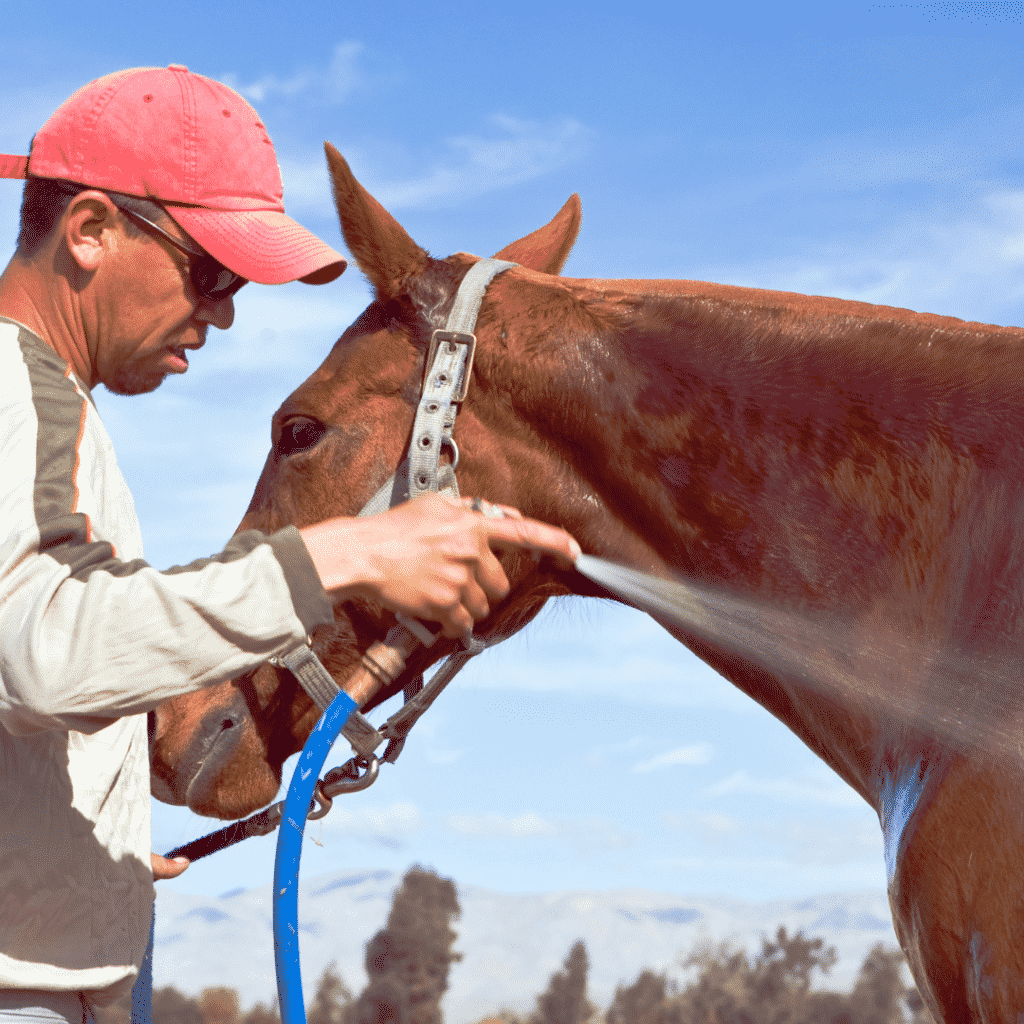
Generally though I would say that more than once a week is too frequent. And if you’re washing your horse really infrequently (less than twice a year) then give washing a go – it might be the answer to how to fix your horse’s dry skin.
But some people never wash their horse, or just spot wash them – and they have no issues! So I don’t want to prescribe anything if your current system is working.
You’re All Set for How to Fix Your Horse’s Dry Skin!
I hope you now feel much more confident about how to fix your horse’s dry skin.
I would encourage you to try all of these solutions out. But if your horse doesn’t show any improvement, definitely take them to the vet for an assessment. There may be some underlying issue that’s beyond the scope of what I can tell you over the internet.
That said, if you do have any remaining questions about how to fix your horse’s dry skin, I’m all ears! Just tell me in the comments below, and I’ll get back to you.
Happy riding!
Liked this post? Why not pin it!
